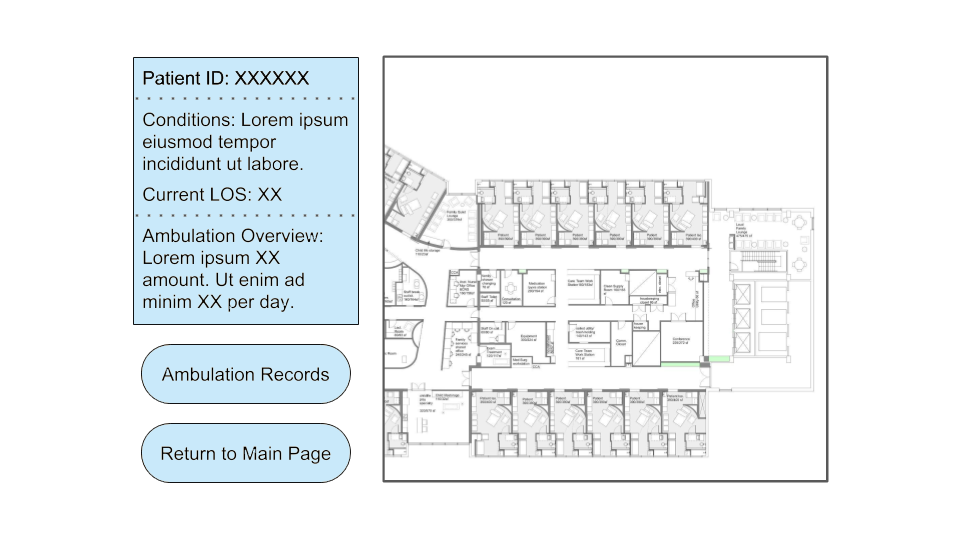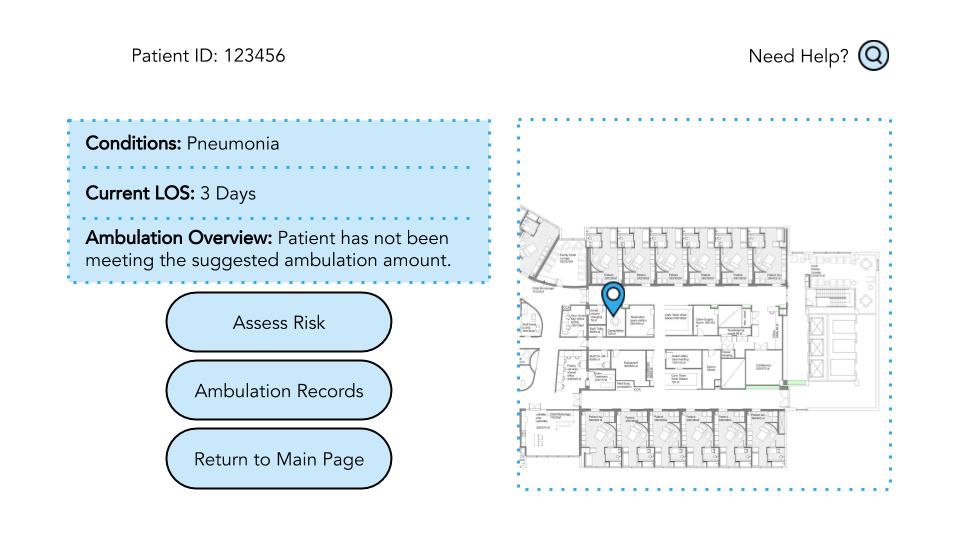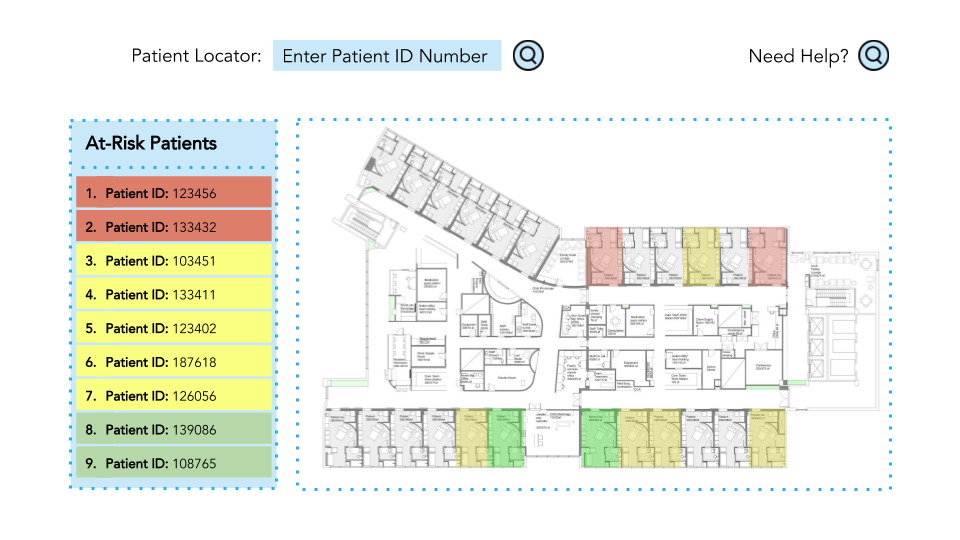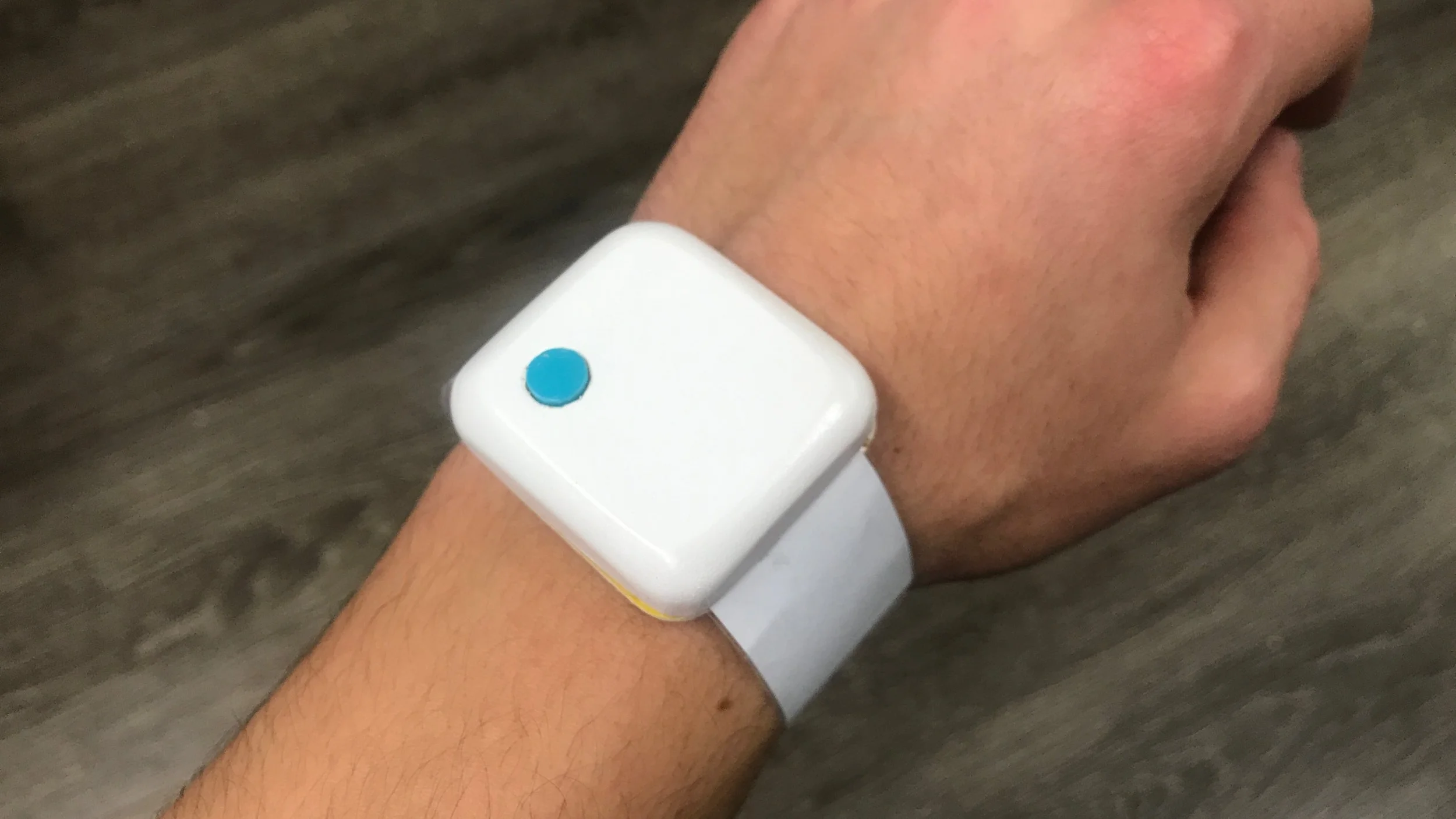
Overview
Our interdisciplinary team had one goal in mind: creating an innovative solution to an existing problem in medical field. The team focused on finding the issues within inpatient setting, understanding its root causes, analyzing the competitive landscape, prototyping and testing potential solutions with stakeholders and ultimately creating a software as a service solution concept to better track the ambulation (mobility) of patients.
Observations
Each team member initiated with the task of shadowing various physicians. Thanks to our medical student teammate, I was able to shadow Dr. Elliot Roth in a PM&R (Physical medicine and rehabilitation) setting at Shirley Ryan Abilitylab. Dr. Roth walked us through both inpatient and outpatient settings as he was conducting his rounds. From this experience I was able to identify different problems such as tracking the improvement of patients as they register for a check-up session. I also had the opportunity to shadow Kevin & Alex Wang, whom are both senior medical students. Within those shadowing sessions, I was able to understand that, even thought the care team encourages patients to be active whenever they have time, they don't ambulate.
Secondary Research
After identifying potential issues, the team focused on conducting secondary research to understand which one to settle on. The team then realized that the immobility within the hospital settings can be very critical. In fact, not being active not only can increase the length of stay of the patient, but also can create additional complications and expenses to the patients. The team then focused on understanding why people don't walk/ambulate even if they are cleared by the physicians. By doing a root cause analysis, realized that the are a lot of different reasons varying from not having an alternative to not finding any value. Therefore, the team decided to work on how they might assist the care team as they try their best to encourage patients to be mobile.
Design Direction
How might we help the care team better encourage the patients to ambulate?
Concept Development
From these insights, the team brainstormed and ideated to create the initial solution concept. The team then came up with a concept that helps the care team by tracking patient location and their ambulation data. This initial concept is a hardware enabled SaaS solution for patient immobility within inpatient settings. It aims not only to aid the care team by tracking the patient location and listing the patients at risk due to not meeting their ambulation goals, but also to become a patient engagement tool for them, as it shows data for hourly, daily and overall ambulation levels. Care team can alter the goals with the patients and discuss the results using the visuals from the software, which is aimed to be integrated in EPIC, an EHR platform.



Prototype, Test, Iterate
Once the the solution became clear to the team, it was time to test it in order to validate. The team initiated by mocking the software. The first wireframes were tested with 10 expert users: physicians, nurses and physical therapists. As they interacted and tested these wireframes, team identified the usability issues and new tensions within the solution. Overall, the solution should not increase expert users' daily work load. Team created a new set of wireframes and observed the returning user group, these care givers as they tried and interacted with it. From these observations, team was able to understand that, with the second version of the prototype, users will be able to benefit from our concept and would definitely utilize it. The team iterated one more time to optimize the user experience by decreasing the overall interaction time, while efficiently sharing the same information.



MVP Design
Since the solution offers both hardware and software components, it was important to create the hardware aspect as well while explaining the technology to stakeholders. There are two hardware components, a wearable that attaches to the patient's wristband and beacons that are strategically located on each floors. The beacons triangulate with the wearable to detect to locate the patients while the wearable itself sends the data to the software via WiFi to collect the ambulation data. To express the triangulation methodology, it was important to create a floor plan and showcase where the beacons would be located and what would be the their purpose. It was also important to create a looks-alike prototype of the wearable for the MVP presentation!












Solution: Mobibud
Mobibud is the final version of the concept designed to assist care givers to better increase patient ambulation. It is a hardware enabled SaaS solution to patient immobility within inpatient settings. It aims not only to aid the care team by tracking the patient location and listing the patients at risk due to not meeting their ambulation goals, but also to become a patient engagement tool for them, as it shows data for hourly, daily and overall ambulation levels. Care team can alter the goals with the patients and discuss the results using the visuals from the software, which is aimed to be integrated in EPIC, an EHR platform. Plus, the step solution model of MobiBud comes with an emergency button, that alerts nurses directly!





